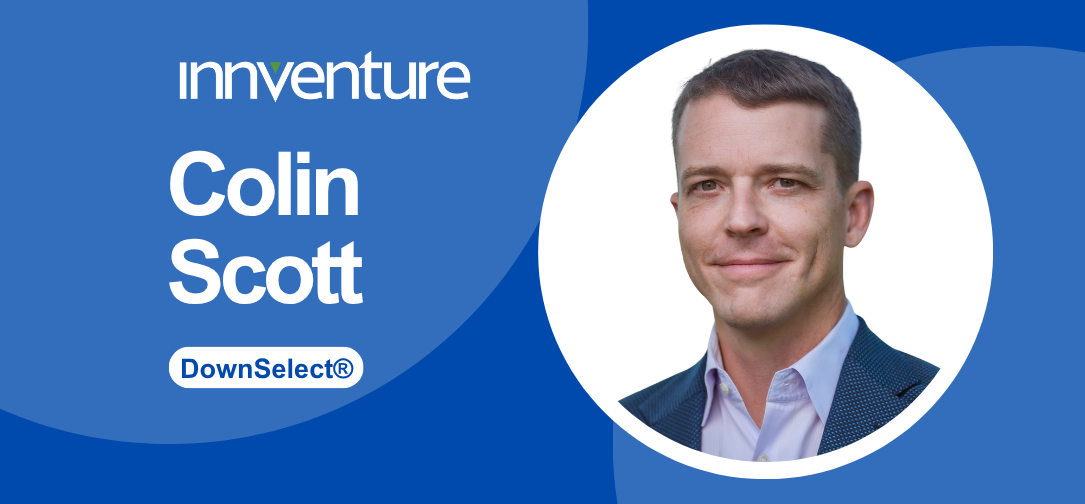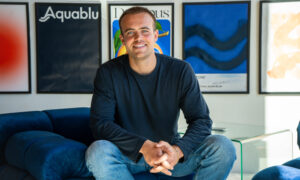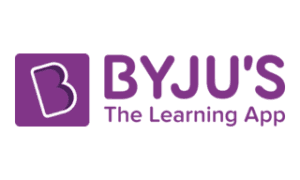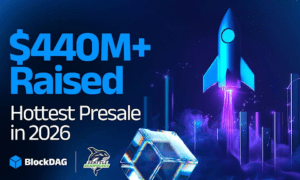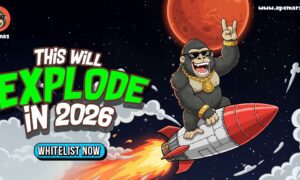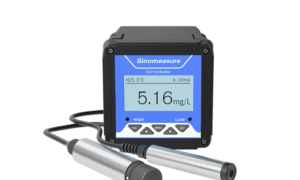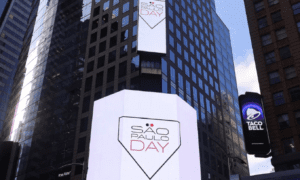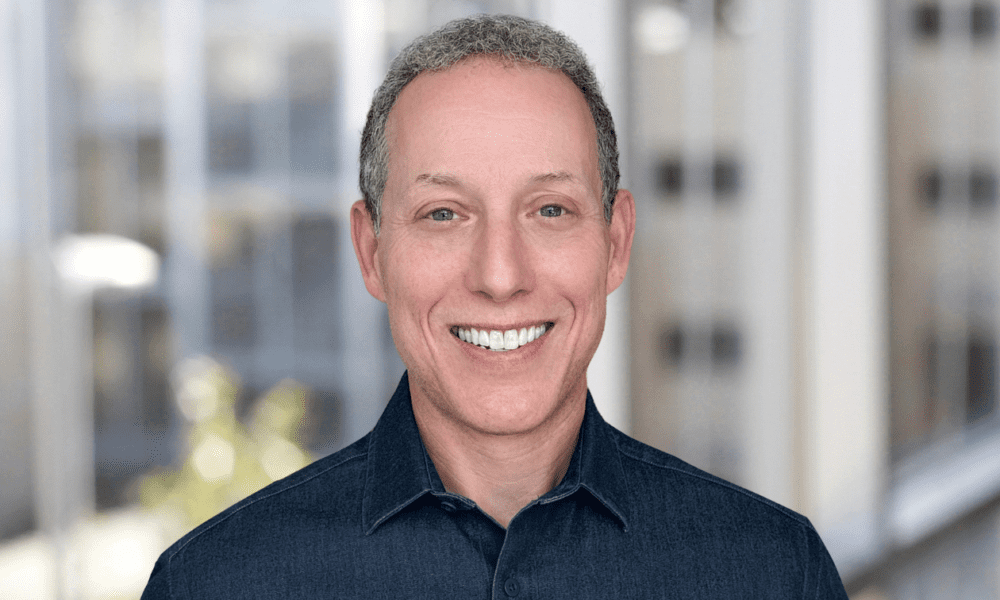Despite nearly $900 billion poured annually into R&D, an astonishing 95% of patents never generate a single dollar in revenue. For startups and established firms alike, this stark reality underscores a critical disconnect between technical invention and commercial innovation. Colin Scott, Senior Vice President of DownSelect® at Innventure, is on a mission to close that gap.
With over 15 years of experience spanning private equity growth and high-tech startups, Colin has honed a systematic methodology to evaluate whether emerging technologies can truly address market needs, or are destined to become expensive missteps. At Innventure, he leads the DownSelect® analysis: a proprietary framework designed to validate the economic viability of transformative innovations before significant capital is deployed.
From his early work at XL TechGroup, where he helped launch ventures in renewable fuels and diagnostics, to his academic foundations in electrical engineering, physics, and entrepreneurship, Colin brings a rare fusion of analytical rigour and commercial foresight. In this TechBullion interview, he shares why most innovations fail, the hidden pitfalls that sabotage even technically sound ideas, and how startups can dramatically improve their odds of success by adopting a disciplined, market-first approach to innovation.
1) Please tell us more about yourself.
I’m Colin Scott, Senior Vice President of DownSelect® at Innventure. I lead what I consider the beating heart of Innventure – our systematic evaluation methodology that helps us identify which breakthrough technology solutions warrant building companies around them.
My background combines electrical engineering from Duke with an MBA from UNC Kenan-Flagler. I spent a decade at XL TechGroup building ventures in renewable fuels and medical diagnostics before joining Innventure.
We’re in the business of building companies to transform tomorrow. We found, fund, operate, and scale new companies based on game-changing technology solutions to strategic unmet needs working in collaboration with multinational corporations like Procter & Gamble, Nokia, and Dow. Since 2015, we’ve evaluated over 150 opportunities and built four operating companies: PureCycle Technologies (which we’ve exited), AeroFlexx, Accelsius, and Refinity. Each addresses significant market challenges through transformative solutions.
2) Your work with DownSelect® focuses on evaluating transformative technology. What are the most common reasons you’ve seen promising technical inventions fail to cross the chasm into commercial success?
The most fundamental failure I observe is confusing invention with innovation. Invention comes from R&D – it’s the creation of new technology. Innovation comes from commercializing a solution that creates new value. Many brilliant technology solutions fail because they’re inventions without innovation.
Many teams become so enamored with their technology that they forget to validate whether anyone will pay for it. They focus on features and benefits instead of economic value – the actual dollars and cents impact on customers.
Common failure patterns include:
Technology-First Thinking: Teams become enamored with their clever solution rather than the problem it solves. Starting with “look what our technology can do” means playing an expensive guessing game with the market.
The Features-and-Benefits Trap: Organizations focus on technical specifications rather than economic impact. We push teams to shift from features and benefits to dollars and cents – immediate, compelling, quantifiable value proposition.
Siloed Development: Technical teams develop in isolation from commercial reality. By the time they engage market expertise, critical decisions about features and applications have been made in a commercial vacuum.
Insufficient Economic Compulsion: The solution may work technically but doesn’t create enough economic value to overcome market inertia. Change is expensive and risky – your value proposition must be overwhelmingly compelling.
Protected Transformative Advantage: Being different isn’t enough – you must be dramatically better in ways that matter economically and can be sustained over time.
The biggest red flag? Teams that can’t answer “who specifically will pay for this and why?” without resorting to technical jargon.
3) Given that 95% of patents never generate meaningful revenue, what are the key signals you look for to determine whether an innovation has real market potential, or is just a well-engineered solution looking for a problem?
Consider the numbers: corporations globally spend trillion of dollars annually on R&D, yet 95% of patents never reach commercialization. That’s not because the technologies are bad – it’s because novelty doesn’t equal value. You can invent technology that’s 50% more efficient, but if customers only need 10% improvement and won’t pay more, you’ve created an expensive museum piece.
We use what I call the MATCH criteria – Market, Advantage, Timeline, Capital, and High Value. But the most critical early signal is whether you can clearly articulate the economic value created for a specific customer solving a specific and big enough problem.
First, we identify quantifiable problems causing measurable pain today. Not theoretical future problems, but issues with specific economic impact. If you can’t quantify the problem in dollars, you won’t quantify your solution’s value either.
Second, we evaluate through our ICQVP lens (Immediate, Compelling, Quantifiable Value Proposition) – can you demonstrate exact economic value to customers? Not percentages or technical improvements, but concrete financial impact they’ll recognize in their P&L.
Third, we examine value chain dynamics. Transformative solutions affect entire ecosystems. Success requires creating value throughout the chain, not just for individual players.
The most important signal is whether there’s a quantifiable problem causing real economic pain today. Not theoretical future problems, but issues with specific dollar impacts. If you can’t quantify the problem, you won’t quantify your solution’s value.
High value is what I consider the soul of DownSelect. We need to understand exactly how a solution drives new dollars and cents value. It must be immediate (customers receive value when using the solution), compelling (sufficient to drive adoption despite change resistance), and quantitative (measurable economic impact).
Pattern recognition and foresight matter too. With Accelsius, we identified in 2020 that thermal constraints would limit data center growth – this was before ChatGPT existed. We saw converging factors: computational density trends, physics limitations, and infrastructure constraints. That foresight helped us recognize a billion-dollar opportunity before the market did.
Let me break down MATCH:
- M is for Market: Understanding the external environment
- A is for Advantage: How this technology solution can achieve sustainable competitive advantage
- T is for Timeline: How long to reach meaningful technical and commercial milestones
- C is for Capital: How much, when, what kind, and what’s the return
- H is for High value: This is the soul of DownSelect® – the economic value created
Key positive signals include:
Quantifiable Economic Impact: Can you express value in reduced costs or generated revenue? Not just “15% faster” but “47% reduction in operating costs.”
Needs Lead: As we say at Innventure, “needs lead.” Start with understanding the unmet need in the marketplace, then link the technology back as a solution that drives economics.
Sustainable Competitive Advantage: Through both IP and strategic control points, particularly in tangible technology solutions that require capital deployment.
Strategic Alignment: The multinational collaborator must see strategic value while recognizing they’re not the right commercialization vehicle.
4) You’ve developed frameworks to help bridge the gap between invention and innovation. Can you walk us through one of these frameworks and how it helps teams avoid costly R&D missteps?
One of my favorite frameworks is “Tigger Time versus Eeyore Energy.” It emerged from observing how optimists and pessimists clash unproductively in traditional innovation meetings.
Here’s how it works:
Structured Perspectives: We intentionally split evaluation teams. One group channels their inner Tigger – exploring all positives, possibilities, and potential. The other brings Eeyore energy – deliberately identifying risks, challenges, and failure points.
Psychological Safety: This creates an environment where no one feels shut down for being negative or dismissed for being optimistic. Both perspectives become part of the analysis, not a debate to win.
Pattern Recognition: The magic happens in synthesis. Where Tiggers and Eeyores agree, you have high confidence. Where they diverge, you’ve identified critical factors needing deeper investigation.
This framework has helped us maintain discipline in our evaluation while still identifying the 2.7% of opportunities that truly deserve investment.
5) U.S. corporations spend nearly $900 billion annually on R&D. Why do you think so much of that investment fails to translate into sustainable commercial value, and what could change that?
The core issue is strategic evolution. Technologies developed under previous strategic priorities often don’t fit current business focus, even when they have significant market potential. Corporations excel at R&D, but when strategies shift, valuable innovations can become orphaned.
We see several factors driving this:
Resource allocation realities: Corporations must focus on core business growth. Even breakthrough technologies that could create new markets may not warrant internal resources if they fall outside strategic priorities.
Risk tolerance mismatches: Transformative innovations often require patient capital and tolerance for uncertainty that doesn’t align with quarterly performance expectations.
Organizational complexity: Getting internal buy-in for commercializing technologies outside existing business units involves navigating competing priorities and complex approval processes.
The most sophisticated corporations recognize this reality. They understand that just because they can commercialize every breakthrough doesn’t mean they strategically should. Some innovations need dedicated focus that only external pathways can provide.
What changes everything is creating systematic approaches to technology externalization. When corporations can transform R&D investments into potential economics through specialized partners who provide dedicated end-to-end commercialization, they unlock value that would otherwise remain unrealized.
The solution isn’t changing how corporations do R&D—it’s creating better pathways for breakthrough technologies to reach their commercial potential.
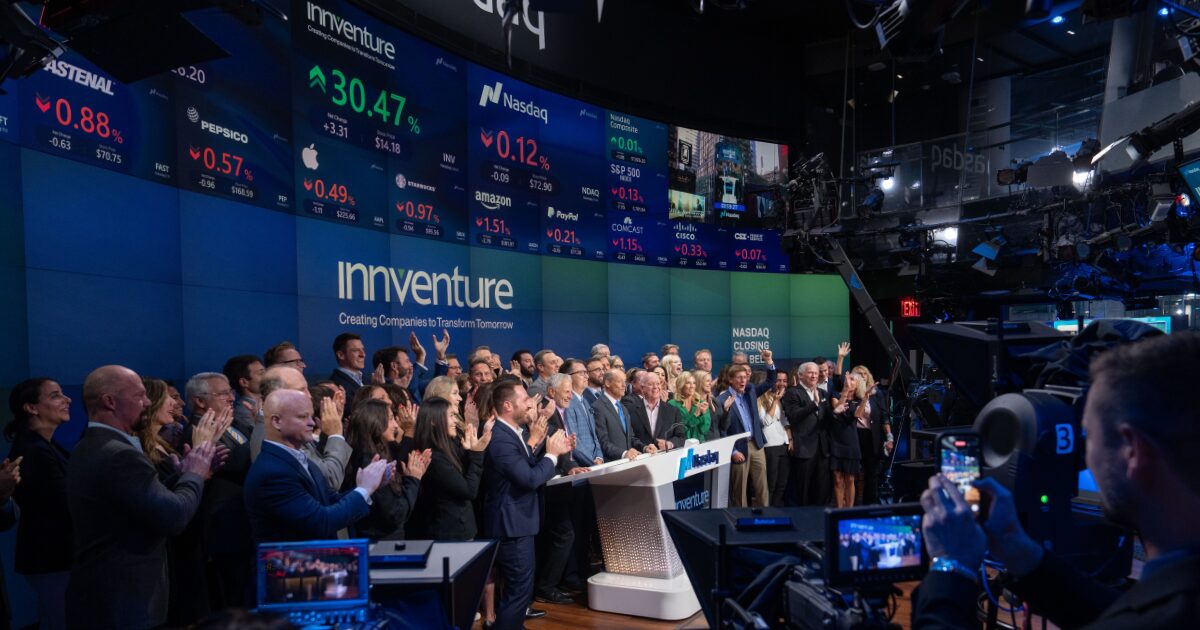
6) How is AI changing the evaluation of breakthrough technologies, and what aspects still require human judgment?
AI is transforming our ability to process vast amounts of market data, technical research, and competitive intelligence at scales impossible for human analysis alone. It’s particularly powerful for pattern recognition and reducing cognitive biases.
Where AI excels in our process:
Data Synthesis: Processing thousands of patents, market reports, and technical papers to identify trends and gaps
Scenario Modeling: Running hundreds of market simulations to test assumptions
Bias Reduction: Applying consistent evaluation criteria without the “cool technology” bias that affects even disciplined teams
However, human judgment remains irreplaceable for:
Context and Nuance: Understanding why a previous solution failed and whether conditions have changed
Stakeholder Dynamics: Reading the organizational readiness and political will for change
Ethical Implications: Evaluating broader societal impacts beyond pure economics
Creative Synthesis: Connecting disparate insights in novel ways
We use AI to enhance collective intelligence, not replace it. The technology identifies patterns and surfaces insights, while human experts provide context and make nuanced evaluations about market readiness and implementation feasibility.
7) Given that many breakthrough technologies claim sustainability benefits, how do you evaluate whether environmental impact translates to economic value?
Sustainability without economic sustainability is just expensive virtue signaling. We evaluate ESG benefits through our DownSelect® materiality analysis framework, which systematically identifies where environmental impact drives long-term business performance.
Our assessment focuses on five key dimensions: growing revenue through premium pricing and market expansion, reducing costs through improved resource efficiency, managing regulatory and reputational risks, building resilience against market disruptions, and increasing adaptability to evolving requirements.
The key differentiator is systematic materiality analysis – we assess which sustainability issues actually impact financial performance rather than just sound impressive. Environmental benefits only matter when they translate to measurable economic value throughout the value chain.
For example, PureCycle’s recycling technology works because it delivers virgin-quality performance at competitive economics, not just because it’s environmentally beneficial. Accelsius succeeds because energy efficiency directly reduces operational costs while meeting sustainability mandates.
This approach positions sustainability as a value multiplier rather than a cost center, which is why our companies can achieve both environmental impact and economic returns.
8) You’ve been part of NewCos in sectors like renewable fuels and medical diagnostics. What unique challenges do companies face in commercializing innovation, and how does DownSelect® address them?
New companies face what I call the “triple valley of death” – technical risk, market risk, and scaling risk. Each requires different expertise and capital structures to navigate successfully.
Unique challenges include:
Extended Development Timelines: Hardware and materials science can’t iterate as quickly as software. Our systematic analysis helps identify which risks can be retired pre-commercialization versus post-launch.
Capital Intensity: Building manufacturing capabilities requires orders of magnitude more capital than SaaS. We structure ventures to achieve meaningful milestones with staged capital deployment.
Regulatory Complexity: Whether FDA approval or environmental permits, tangible tech often faces regulatory hurdles that can make or break commercialization. We evaluate regulatory pathways as rigorously as technical feasibility.
Market Education Burden: Revolutionary technology solutions often require educating entire value chains. Our collaboration with multinationals provides built-in market channels and credibility.
DownSelect® addresses these by evaluating opportunities across four dimensions simultaneously: the technology solution itself, the market need, the strategic execution requirements, and critically, the multinational collaborator who can accelerate adoption. This comprehensive approach identifies which challenges are manageable versus insurmountable before significant capital is deployed.
9) Risk mitigation is a core part of what DownSelect® does. What are some early warning signs that a tech venture is headed toward failure, even if the technology itself appears sound?
The most dangerous period is when the technology works but the business doesn’t. Technical success can mask fundamental commercial flaws until it’s too late.
Critical early warning signs:
Customer Enthusiasm Gap: If pilot customers aren’t pulling you forward, demanding faster deployment, something’s wrong. Polite interest is a death sentence.
Economic Value Erosion: When customers start negotiating price before experiencing value, or when the ROI calculation keeps getting more complex, the economic proposition isn’t compelling enough.
Feature Creep: Teams adding capabilities to close deals signal product-market fit problems. Great solutions sell on core value, not feature lists.
Adoption Velocity Mismatch: If adoption is significantly slower than modeled despite technical success, either the market education burden was underestimated or the value proposition isn’t as compelling as believed.
Team Dynamic Shifts: When technical and commercial teams stop collaborating effectively, or when founders become defensive about pivot suggestions, organizational dysfunction often follows.
The key is establishing clear, quantifiable milestones that validate both technical and commercial assumptions. When ventures start explaining away missed milestones rather than addressing root causes, intervention is critical.
10) What role does market timing play in your evaluation process? Can a breakthrough idea fail simply because it’s introduced too early, or too late?
Market timing is often the difference between a billion-dollar success and an expensive failure. But timing isn’t about predicting the future – it’s about reading current market signals correctly.
We evaluate timing across three dimensions:
Technical Readiness: Not just “does it work?” but “is it reliable and scalable?” Introducing solutions that are 80% ready into markets expecting 99.9% reliability is fatal.
Economic Conditions: Market needs must be acute enough that customers will overcome switching costs. The 2008 financial crisis killed many efficiency plays that thrived post-recovery.
Ecosystem Maturity: Revolutionary solutions often require complementary technologies, regulations, or infrastructure. Electric vehicles needed charging networks, not just better batteries.
The “too early” trap is especially dangerous for technical teams who see the future clearly but underestimate adoption barriers. We saw this repeatedly with early IoT ventures – great technology, but the ecosystem wasn’t ready.
“Too late” usually means established players have locked in customers with “good enough” solutions. Once switching costs calcify, even superior technology struggles.
Our approach focuses on identifying “Goldilocks windows” – when pain points are acute, solutions are mature, and ecosystems can support adoption. Timing these windows correctly can mean starting preparation years before launch.
11) For tech entrepreneurs and startup founders trying to ‘beat the odds,’ what’s the single most important mindset or strategic shift you believe they need to make to improve their chances of success?
This shift is fundamental because when you start with the problem:
Make the problem your purpose. Let the problem be your purpose, not the technology. Fall in love with solving meaningful challenges, not clever inventions.
This shift creates cascading benefits:
Resource Allocation: Becomes laser-focused on problem-solving. If one approach isn’t working, reallocate to what will solve the problem.
Evaluation Criteria: Shifts from technical metrics to economic value – features and benefits become dollars and cents.
Team Alignment: Creates unity across functions. Everyone focuses on the singular goal of solving the customer’s problem.
Strategic Flexibility: Enables adaptation without crisis. You’re committed to the problem, not married to a specific solution.
Remember: we’re building companies from scratch, not investing in others’ ideas. The mindset must be owning and operating for long-term business success, not just capital returns.
Be curious, connect dots across industries, and always ask: “Am I building a solution searching for problems, or solving problems worth solving?” The entrepreneurs who succeed fall in love with their customer’s problem, not their own technology.

